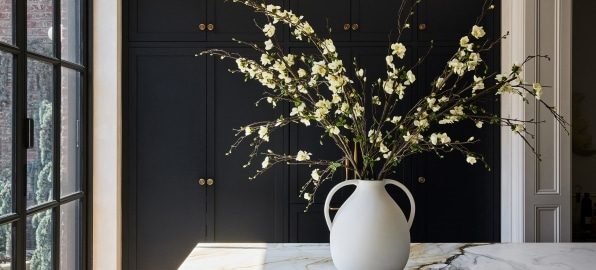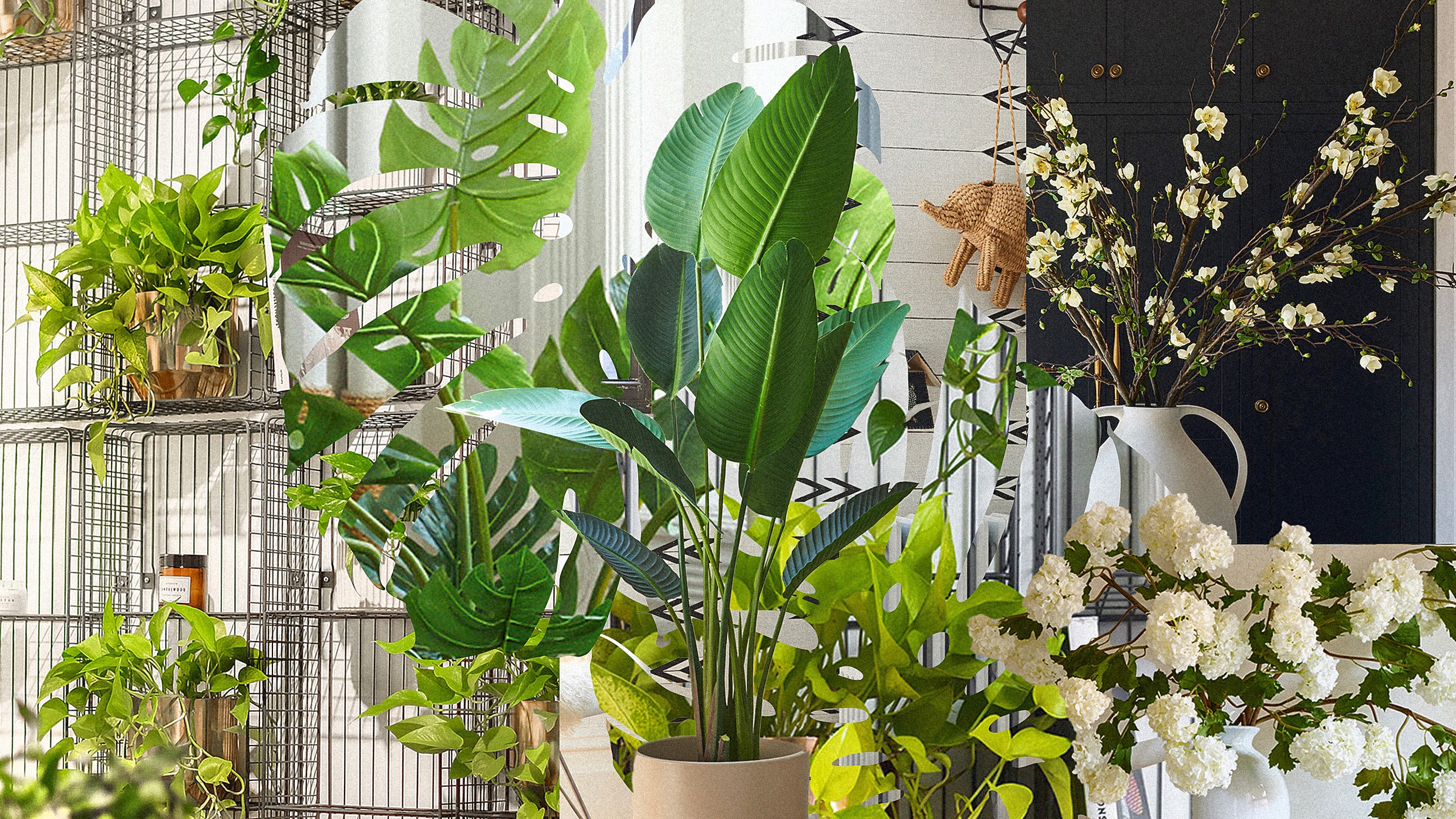On New Year’s Eve 2022, my husband and I brought a controversial gift to a friend’s house party: a white orchid bestowed on us by my mother-in-law, so we don’t show up empty-handed. (Moms.)
Orchids are notoriously hard to care for, so I was aghast when a few hours into the party, one of the guests, evidently worried about its dry soil, just dumped a glass of water over it. I needn’t have worried, though, because the water bounced right off the soil and spilled all over the table.
The soil was plastic, the orchid was fake, and every single person in the room had fallen for it—my mother-in-law and myself included.
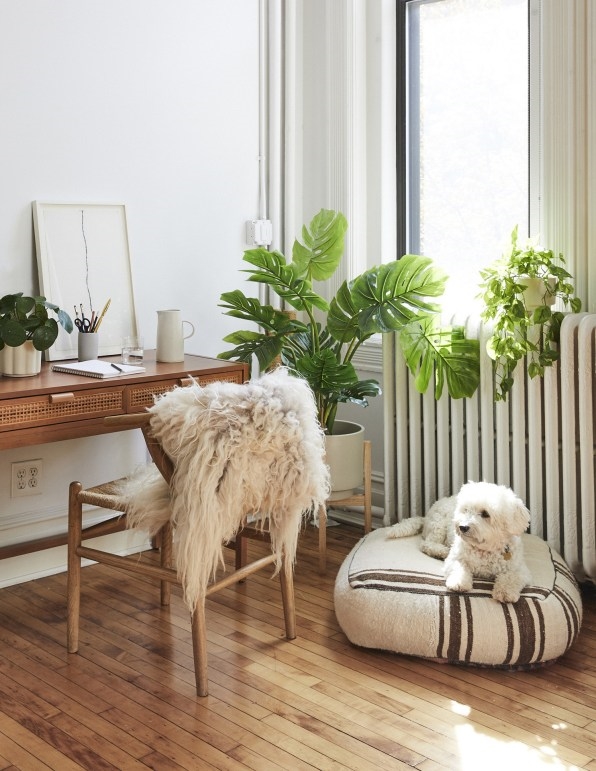
The New Year’s Eve orchid, as it shall henceforth be known, symbolizes a new era in the history of house plants. Once an instant indicator of low-brow taste and garish interiors, fake plants—also known as artificial plants, faux plants, or permanent botanicals if you’re feeling fancy—are becoming increasingly realistic and increasingly popular.
According to a recent report, the artificial plant market is expected to reach just under $1 billion by the end of 2030. That may be a fraction of the market held by real plants and flowers—$18.5 billion in 2022—but it’s hard to ignore for an industry with such bad rep that Radiohead named a song after it.
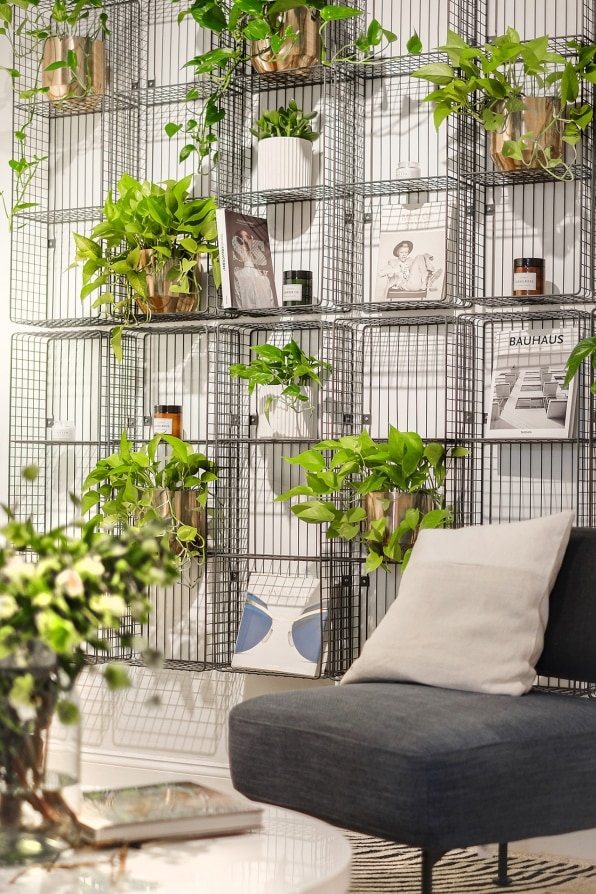
Google Trends suggests that faux plants have been growing in popularity since around 2015, but interest skyrocketed at the dawn of the pandemic, around the same time when real houseplant sales soared. Today, the U.S. market is split between big players like Treescapes and Nearly Natural, which sell thousands of products on their respective websites, and boutique brands like Afloral, Artiplanto, and Petals.
The New Year’s Eve orchid came from Costco, but similar if not identical versions can also be found on Wayfair, Pottery Barn, Ikea, and anywhere you’d find commercialized home decor. Target has been selling faux plants for more than a decade, and a spokesperson told me they continue to grow in popularity. Even The Sill, which built a houseplant empire selling plants online, introduced fake versions in 2019. “We wanted to start rethinking the category, so we could stop being apologetic for having faux plants at home,” says the CEO and founder Eliza Blank. Today, The Sill offers more than 20 styles including pileas, snake plants, and a cactus with spines that look painfully prickly but are in fact soft as rubber.
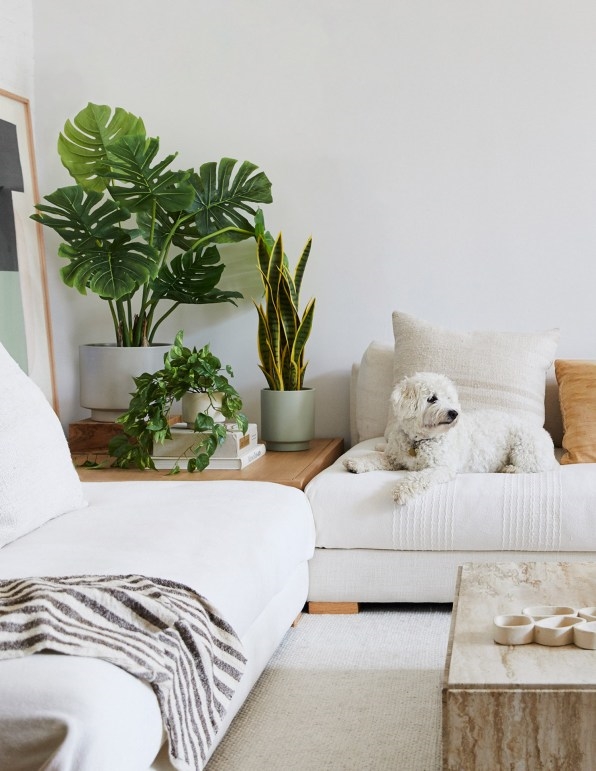
So, why so popular? Obviously, fake flowers don’t need water or sunlight to survive, which makes them great candidates for people with a propensity for killing plants, but they’re also perfect for dimly lit spaces like bathrooms, and large-scale installations in hotel lobbies. Artem Kropovinsky, who runs an interior design studio called Arsight in New York, told me he often sources artificial plants for retail spaces, too, where regular upkeep isn’t always easy. “I pay attention not only to how they mimic the look of real plants, but also [how they] replicate the texture, the tonal variations in the leaves, and even the natural growth patterns,” he says.
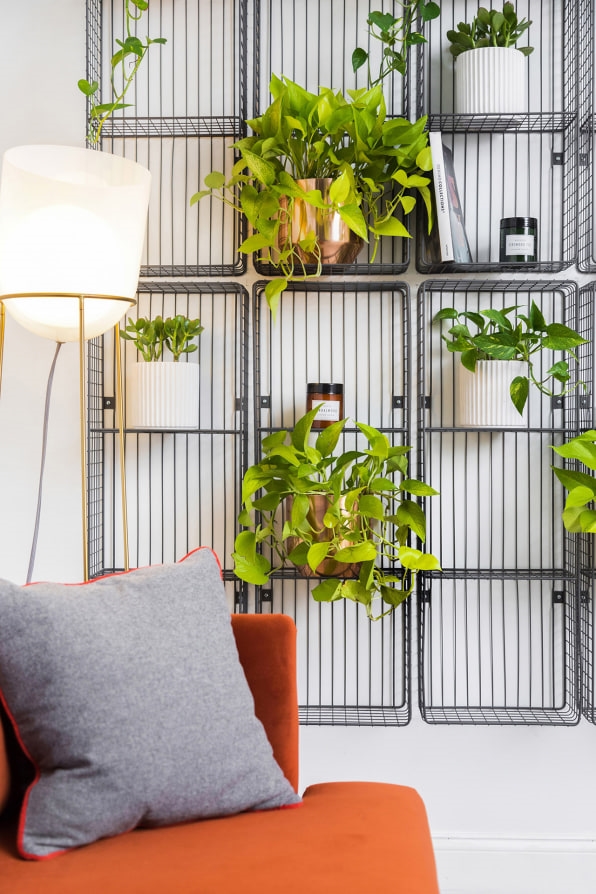
Nowadays, Kropovinsky doesn’t have to look far to be convinced because advancements in manufacturing and materials have made it so that most fake plants can safely pass for the real deal. No, they won’t grow taller than they were when you first bought them. Yes, their plastic leaves are made of petroleum, and you have to dust them once a month. But they look realer than ever, and isn’t that all that matters?
The roots of artificial flowers were planted about 1,500 years ago in China, where craftspeople wove silk fibers into elaborate floral replicas that noblewomen wore in their hair. China had the monopoly on silkworms for millennia—until two monks smuggled silkworm eggs inside a bamboo pole, and took them to Constantinople around 550 A.D.
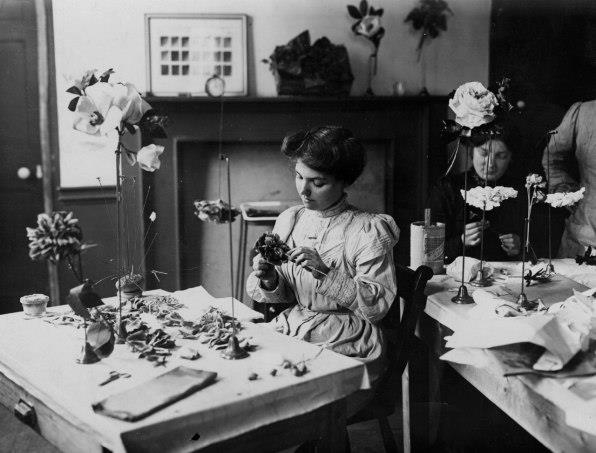
The move sparked a thriving silk industry that started first in the Byzantine Empire, then spread across 12th century Italy, 14th century France, and after the French Revolution, to Victorian-era England. By the early 1800s, it had reached America, and in 1905, there were 146 artificial flower and feather factories in Manhattan alone.
Back then, artificial flowers came in a wild array of materials, from satin to velvet to muslin. These may have been works of art, but they lacked the realism that later materials provided. Then came plastic in the 1960s, and synthetic fabrics took the industry by storm. In recent decades, production went full circle and returned to China, where most artificial flowers are manufactured today.
Natural orchids can take up to eight years to grow from seed to bloom. Fake orchids take about a day. An episode of “How It’s Made” from the Discovery and Science Channel gives a glimpse into the manufacturing process, which looks less like gardening and more like an assembly line at a factory.
First a worker uses an iron cutter blade to cut 100 layers of petals from a stack of nonwoven polyester sheets. (Fittingly, the workers are making an orchid.) Then, another worker dyes the individual petals and presses them inside a heated mold to give them texture before gluing them together. Meanwhile, another worker uses silk screening to color each flower head with acrylic paint. They then press the flower heads inside another mold, and glue them to remaining petals, along with any buds to give the illusion of a flower on the verge of blooming (like our New Year’s Eve orchid.)
Once the flower is assembled, a worker dips it in polymer to make the petals soft to the touch. They then brush the petals with a thin coating of talcum powder to prevent them from sticking to each other. Once they have dried at room temperature, the finished flowers are boxed up, sealed shut, and shipped around the world with no concern for their survival.
If this sounds unnatural, that’s because it is. The New Year’s Eve orchid may have fooled about a dozen people, but like all fake plants, it remains a highly engineered accessory crafted according to the latest interior design trends. Susan Bonfiglio is the CEO of Afloral, which carries more than 600 products—including artificial succulents, faux boxwood plants, and yes, fake orchids—mostly manufactured in China.
Bonfiglio says the company is always redesigning products based on trends they’re seeing in home interiors. “Whether it’s more blooms on a stem, a longer stem or more greenery, customers’ input usually indicates how trends are moving,” she says, noting that neutrals are giving way to colors, and white hydrangeas are being upstaged by blue and green hydrangeas ones.
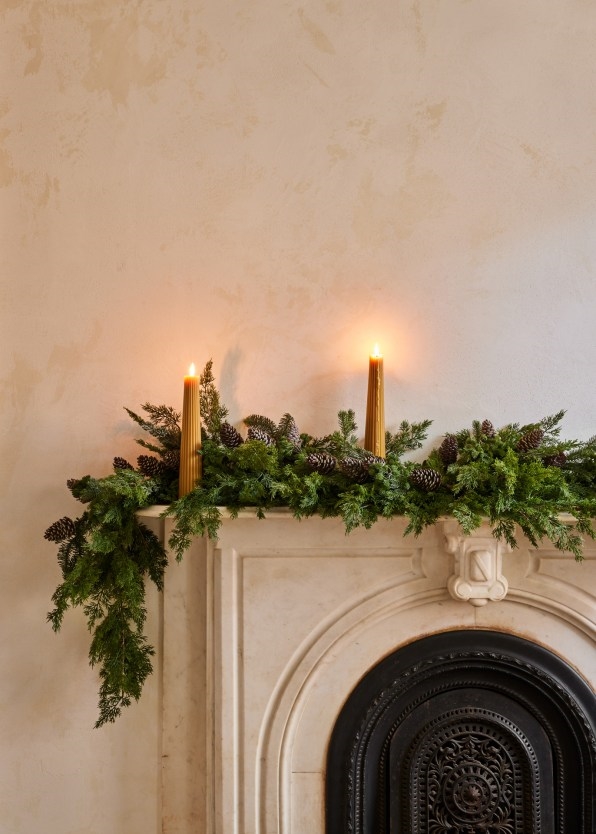
Interestingly, Afloral was once a local wholesale floral supplier, but Bonfiglio bought the company in 2010 and transitioned to a direct-to-consumer business built around artificial flowers. “At that time, fresh flowers were not a viable option to ship and artificial flowers used for DIY weddings was where the growth was happening,” she says. “There was not a lot of competition online and the DIY community was new and growing.”
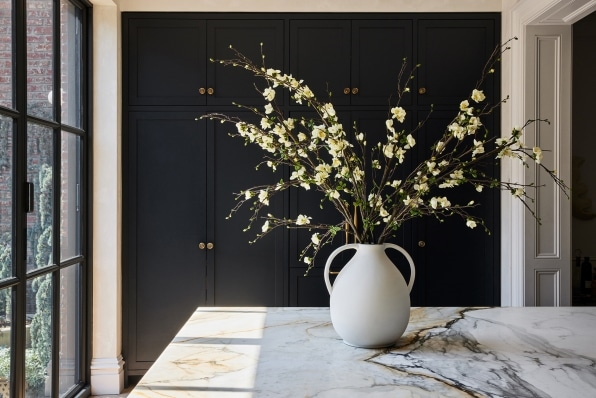
Thirteen years later, competition abounds and it has led to various material innovations in the industry. Since 2021, for example, the British company Vistafolia, which makes artificial green walls, has been researching ways to make fake foliage with bio-based polymers. Working in tandem with the University of Surrey, the company is hoping to reduce plastic waste and develop products that are more recyclable, and although the company declined to provide any further details at this time, it said the team is “making some really good progress” on the new material.
Even if Vistafolia succeeds, it will take a considerable ripple effect for the entire industry to catch up and cut down on plastic waste. In the meantime, we are stuck playing make believe with little orchid-shaped lies encased in plastic. The good news is, keeping them alive may not be gratifying—but killing them isn’t devastating either.
(9)
Report Post